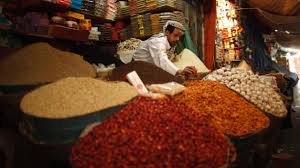The Food and Drug Administration dropped a spicy bombshell this week when it announced that of 20,000 shipments of imported spices to the United States, 7% of the shipments were found to be contaminated with Salmonella which can result in death if the infection spreads from the intestines to the bloodstream where it can then attack organs. 
Salmonella is a real food-borne issue in the United States where 1.2 million people are sickened by the disease each year. Now, we are learning that the greatest single source of contamination is not actual food but the spices used on those foods. Mexico has the highest contamination rate, according to the study, a whopping 14% of all imported spices. India is the largest exporter of spices in the world and 7% of the imports sent to the US are contaminated with the disease.
Spices used in Italian and Greek cooking such as Basil and Oregano, averaged contamination for Salmonella rates that averaged 12%. Coriander was the most dangerous with 15% being contaminated. High levels were found in Curry powder and Cumin and even black pepper, was contaminated at a rate of 4%.
We have worked with chefs around the world on culinary projects and tours. Most chefs advise putting spices on at the very last minute so their flavors are not absorbed by any liquids. In fact, in India and much of Asia, spices are added at the beginning as a dish cooks. But in Western Europe, particularly, Greece, Italy, and Spain, spices are often sprinkled on a dish at the very last moment which is dangerous since only cooking heat can destroy the Salmonella virus.
Travelers dining in restaurants in the United States and abroad now have a new concern and one that ought to be taken quite seriously. The percentage of visitors to Mexico, for instance, who actually contract “Montezuma’s Revenge” is actually lower than the 14% of imported spices from Mexico that carry the Salmonella virus.
This is a serious issue since it is now clearly not enough to know where our food is sourced and what has been added to it. It is now critical to know when spices have been added and to make it clear to restaurant personnel here and abroad that adding spices at the last moment is not at all acceptable in light of the new findings.
